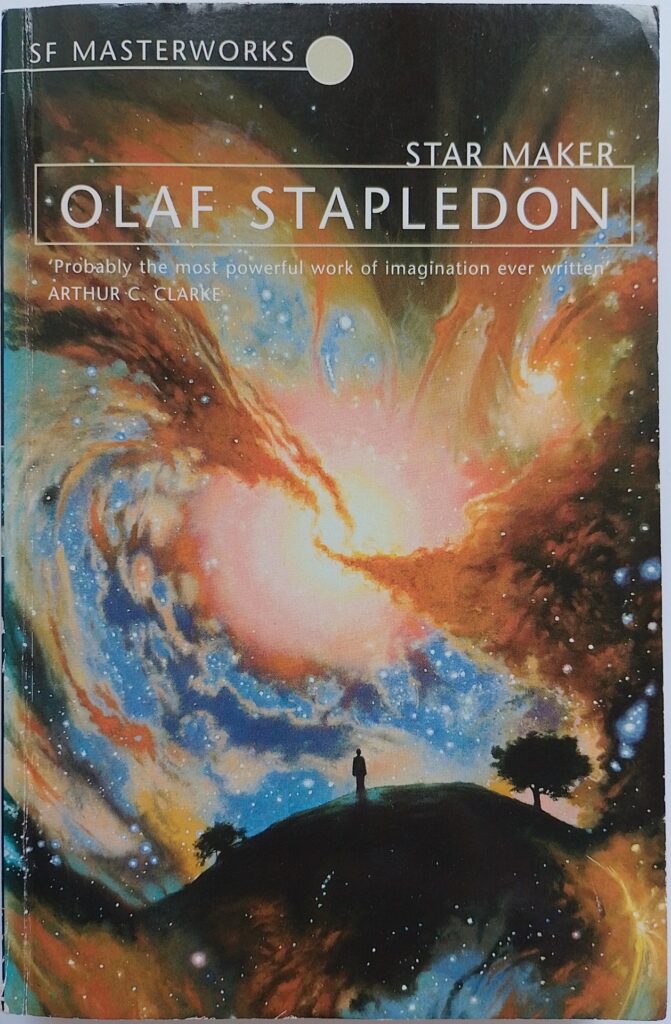First published 1937. Millennium, paperback, 1999, pp 272, c.105,000 words (main text).
In his foreword, Brian W. Aldiss says that Stapledon stated that ‘this [book] is not a novel at all’, and one can see why. The protagonist is not described and there is only one other named individual. The arc of the story is a speculative history of the universe, not told in linear form but as a process of discovery from a narrow and local perspective, expanding outwards to include everything. It is very much a product of its time – during the rise of fascism and communism and with the looming threat of another war. The author lectured in philosophy and psychology although not as a member of a university faculty. He branched out into writing fiction with the aim of reaching a wider audience for his ideas and beliefs, notably pacifism.
The writing is very rich, beautiful in places, rather dense with philosophical terminology and slightly archaic (e.g. divagation, twi-minded, intellection). It is a work of great imagination and has, not surprisingly, been admired by many science fiction writers. The first third is the most accessible part, describing a host of different forms of intelligent life. One can see this part reflected in alien species adopted by many later writers. From then on it becomes increasingly detached from the physical and ascends into religious territory. Sometimes it comes across as a drug-fuelled psychedelic experience or something an isolated monk might see in a vision.
Stapledon must have kept up with developments in physics and makes extensive use of contemporary theories. For example it contains an accurate description of the starbow phenomenon (experienced when a space traveller moves at a speed that is a significant fraction of light and therefore stars ahead appear blue shifted, and those behind red shifted.) This is the earliest description of the phenomenon that I have encountered, although I doubt Stapledon was the originator of the idea. Some of the physics theories of the time have fallen by the wayside. We now know that many, if not most, stars have planets, and those are formed from the remnants of the dust and gas cloud from which the star was made, and not drawn out from the star by a close encounter with another star as had been thought earlier. Interestingly the cosmos is described as being forever expanding, a theory that is now back in fashion, albeit as a result of different phenomena. Also the book posits multiple cosmoses, which is akin to the multiverse theories now quite widely held.
There are some ideas here which have fallen out of favour such as telepathy, which is used extensively as tool of discovery, particularly in the later stages of the book. There is a brief reflection on eugenics in which the potential for abuse is noted but it is lauded for ‘raising the calibre of the race’.
The second paragraph of the book is one of the most beautiful descriptions of the virtues of family life that I have ever read. Elsewhere he writes of what love means to him, which completely resonated with me: ‘To love is to will the self-fulfilment of the beloved, and to find, in the very act of loving, an incidental but vitalizing increase of oneself.’ That sentence gives a flavour of the density of the prose, its profound thoughtfulness and the self-assurance of the writer.
The book is an interesting read although it does seem to get tied up in some philosophical knots in places which are rather glossed over.
© William John Graham, May 2022

